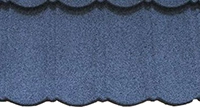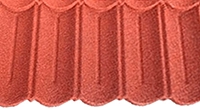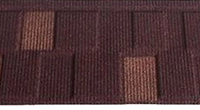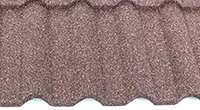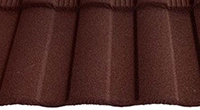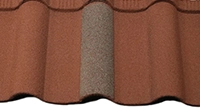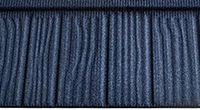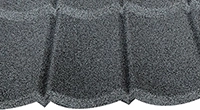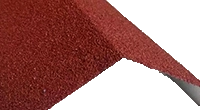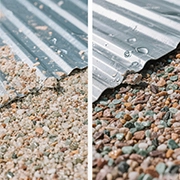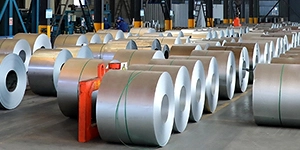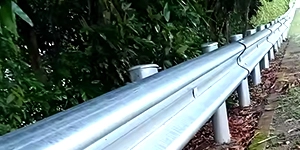Are Stone Coated Metal Tiles Suitable for Hot Desert Environments?
Desert environments present some of the most challenging conditions for building materials, with intense UV radiation, extreme temperature fluctuations, and abrasive sandstorms. This naturally leads to an important question: are stone-coated metal tiles truly suitable for hot desert environments? The evidence demonstrates they're not merely suitable, but exceptionally well-adapted to these demanding conditions.
Exceptional Resistance to UV Degradation
The desert sun delivers intense ultraviolet radiation that rapidly degrades many organic building materials, causing fading, embrittlement, and premature failure. Stone-coated metal tiles combat this through their protective layer of natural stone granules, typically basalt-based, which are naturally UV-resistant . These ceramic-coated stones block harmful radiation from reaching the underlying waterproofing membrane and metal substrate.
The acrylic resin top coating provides additional UV protection while locking the stone granules permanently in place. This combination creates a roofing surface that maintains its color and physical properties despite years of intense sun exposure . Testing confirms these tiles withstand accelerated weathering equivalent to decades of desert sun without significant degradation, outperforming asphalt shingles that typically become brittle and fade under similar conditions.
Superior Thermal Performance and Energy Efficiency
In hot climates, reducing heat gain becomes a primary concern for occupant comfort and energy expenditure. Stone-coated metal tiles excel in this area through several mechanisms. Most significantly, their surface reflectivity is 1.4 to 7 times higher than conventional roofing materials . This means a much larger percentage of solar radiation is reflected rather than absorbed, directly reducing heat transfer into the building interior.
The natural stone surface further enhances thermal performance through its high emissivity—the ability to radiate absorbed heat back to the atmosphere. This combination of high reflectivity and emissivity can reduce rooftop temperatures by up to 20°C compared with dark traditional roofing materials . The resulting reduction in cooling energy requirements can reach 15-25%, delivering substantial operational cost savings over the building's lifespan.
The installation system provides additional thermal benefits. The ventilated air gap created by the batten system allows continuous airflow beneath the tiles, carrying away any heat that does transfer through the material . When combined with appropriate insulation, this creates an exceptionally energy-efficient roof assembly ideally suited to hot desert conditions.
Outstanding Performance in Temperature Extremes
Desert environments subject materials to extraordinary temperature ranges, with daytime highs exceeding 50°C (122°F) and nighttime lows near freezing in some regions. These dramatic thermal cycles cause conventional materials to expand and contract repeatedly, leading to fatigue failure, joint separation, and other forms of deterioration.
Stone-coated metal tiles are engineered to withstand precisely these conditions. Testing verifies they maintain integrity through temperature extremes from -40°C to 90°C without cracking, delaminating, or distorting . The steel substrate expands and contracts uniformly, while the interlocking installation system accommodates these dimensional changes without stress accumulation. This thermal stability ensures long-term performance despite the daily temperature swings characteristic of desert climates.
Resistance to Abrasive Sand and Dust
Sandstorms present a unique challenge in arid regions, with fine abrasive particles capable of eroding building surfaces over time. The stone-coated surface proves exceptionally resistant to this form of degradation. The hardness of the natural stone granules (typically 6-7 on the Mohs scale) far exceeds the hardness of windblown sand (typically quartz at 7 Mohs), minimizing abrasive wear .
The multiple protective layers further ensure that even if minor surface erosion occurs, the underlying metal substrate remains protected by the aluminum-zinc coating and polymer layers. This multilayer protection system maintains the roof's waterproofing integrity despite years of exposure to blowing sand and dust.
Fire Resistance Critical for Arid Regions
Arid regions frequently experience elevated wildfire risk, making building material combustibility a serious safety consideration. Stone-coated metal tiles offer exceptional fire resistance, typically carrying a Class A fire rating—the highest available for roofing materials . Their all-noncombustible composition (steel, stone, and fire-resistant polymers) will not ignite or contribute fuel to wildfires, providing crucial protection for buildings and occupants in fire-prone regions.
Durability Against Expansion and Contraction Forces
The extreme thermal cycling in desert environments creates significant expansion and contraction forces that challenge conventional roofing systems. The individual metal tiles expand and contract independently within the interlocking system, preventing cumulative stress buildup that can cause buckling or seam separation in large continuous roofing surfaces.
The mechanical attachment system—with screws securing each tile to the underlying battens—mainstands these dimensional changes indefinitely. This performance contrasts with fully adhered membrane systems that can develop wrinkles or debonding under similar conditions.
Long-Term Value in Desert Conditions
When evaluated over the complete life cycle, stone-coated metal tiles deliver exceptional value in desert environments. Their 50+ year service life eliminates multiple replacement cycles required by conventional roofing, while their minimal maintenance requirements reduce long-term ownership costs. The energy savings from their superior reflectivity further enhances their economic advantage, particularly as cooling costs continue rising.
For architects, builders, and property owners in desert regions, stone-coated metal tiles represent a technically advanced solution specifically suited to the unique challenges of hot, arid climates. Their UV resistance, thermal performance, abrasion resistance, and fire safety characteristics combine to create a roofing system that doesn't merely survive desert conditions, but performs exceptionally within them—delivering decades of reliable, energy-efficient protection.
